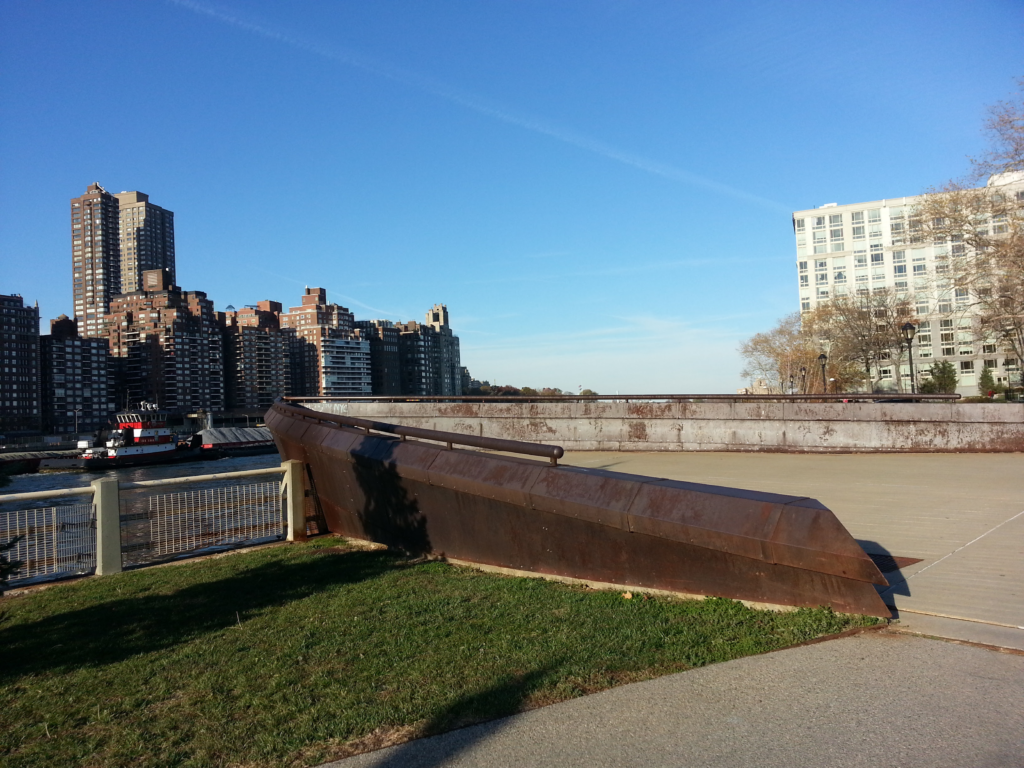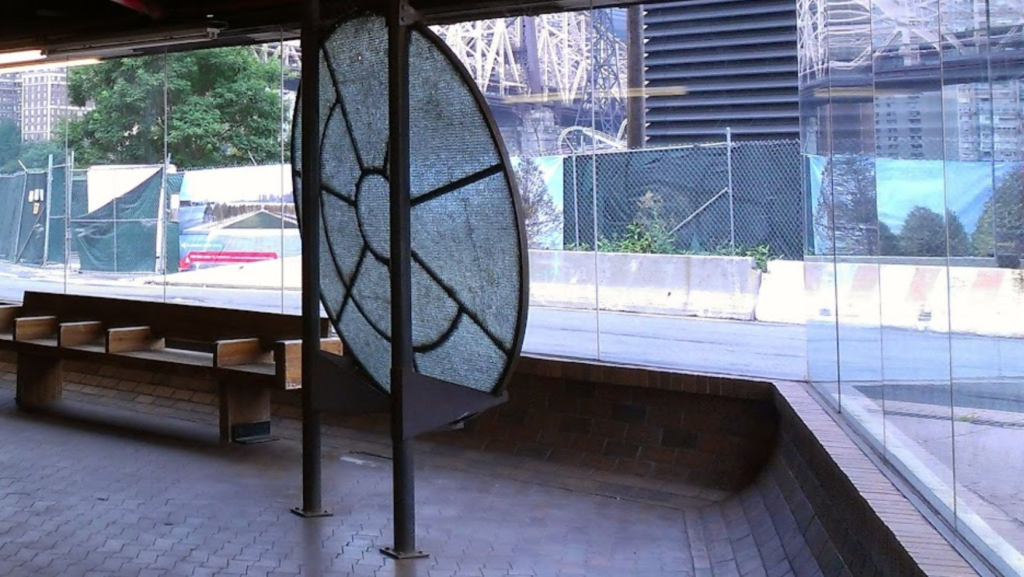Thursday, May 18, 2023 – SOME ISLAND INFORMATION FROM UNTAPPED NEW YORK



FROM THE ARCHIVES
THURSDAY, MAY 18, 2023
ISSUE 993
WHAT
UNTAPPED NEW YORK
SAYS ABOUT
ROOSEVELT ISLAND
PART 1
JUDITH BERDY
13 SECRETS OF NYC’S ROOSEVELT ISLAND

Untapped New York has written a lot of articles on New York City’s islands, both abandoned and in use. While the city’s mainland is filled with cool history and things to do, its islands, such as North Brother Island, Hart Island, Governors Island, and Rikers Island, also have some intriguing sights. Now, it’s time to rediscover New York City’s Roosevelt Island – a residential, two-mile-long island packed with interesting secrets.
1. Roosevelt Island Has Had At Least Six Different Names

Though Roosevelt Island is now named after President Franklin Delano Roosevelt, people have called the island quite a few different things before. The Lenape tribe, who first inhabited the island, called it “Minnehanonck.” According to the New York Times, this name is commonly thought to be translated as “Long Island,” or “It’s nice to be on the island.” When the Dutch purchased Roosevelt Island from the Native Americans in 1637, they renamed it “Varken Eylandt,” or “Hogs Island,” for all the hogs raised there. A little while later, a British captain named John Manning lived on the island in shame after surrendering New York to the Dutch, so it became known as “Manning’s Island.”
2. Roosevelt Island Has the Country’s Only Automated Vacuum Collection System Serving a Residential Complex

This is probably one you didn’t expect: Roosevelt Island has the only Automated Vacuum Collection System (AVAC) to serve a residential complex in the entire nation. An AVAC is essentially a high-speed waste transportation system that uses underground pneumatic tubes to a collection station, where it is compacted and sealed in containers. The AVAC moves 5.8 tons of trash per day.
Operated by the New York City Department of Sanitation, it is only one of two such systems in the United States at this scale (the other being at Disney World). For nearly half a century, the island’s residential trash has been handled without curbside truck pickup, limiting the need for workers to be out handling the garbage. The waste stays in an inlet until a sensor notes the garbage has reached a certain level. The AVAC system automatically opens the valve and sucks garbage at 60 to 70 miles per hour through 20-inch underground tubes to the central facility.
3. The Octagon Building Used To Be An Infamous Lunatic Asylum

Many have probably heard of Nellie Bly, a woman who pretended to be insane in order to write a breakthrough investigative piece on the cruelty of the Women’s Lunatic Asylum on Blackwell’s Island. This asylum was run inside Octagon Building which still stands on Roosevelt Island. The asylum opened in 1838, and rumors quickly spread about its brutal abuse of the inmates. In her expose, “Ten Days in a Madhouse,” Bly called the asylum a “human rat-trap” with staff who “choked, beat and harassed patients.”
The asylum moved to Ward’s Island a little while later, so this building became the Metropolitan Hospital, which then moved to Harlem in the 1950s. The asylum’s original octagon still stands as a classy apartment complex near a beautiful community garden, quite a contrast to what it used to be. Visitors are generally welcome to enter the octagon, which serves as the lobby, and look at the old photographs on display.

On the island, Bly’s legacy is remembered with a public art piece called The Girl Puzzle. This piece consist of a series of faces that depict women who have endured hardship in their lives and were made stronger because of it. In the center of the monument is a Bly’s face cast in silver bronze. Bly’s face is flanked by the four bronze faces meant to represent Asian American, Black, young, older, and queer women, each rendered in partial sections to appear like giant puzzle pieces.
4. The Ruins of a Smallpox Hospital Remains on Roosevelt Island

If the lunatic asylum and prison weren’t enough, another former, creepy institution on Roosevelt Island can be added to the list: a smallpox hospital. By the end of the 1800s, it was common to isolate patients suffering from contagious diseases like smallpox on islands, like North Brother Island, Hoffman and Swinburne Islands, and of course, Blackwell’s Island. The island’s Gothic Revival-style Renwick Smallpox Hospital was designed by James Renwick Jr. (who designed St. Patrick’s Cathedral), built using labor from the lunatic asylum and completed in 1856.
It functioned for 19 years and treated about 7,000 patients. Many of these were impoverished immigrants or Union soldiers who needed curing. In 1875, the hospital moved to North Brother Island when it became too crowded, but the original building remains today and is the “only landmarked ruin” in New York City. During the construction of FDR Four Freedoms Park, the organization behind the park hoped to use the hospital as a visitor center, but funds and interest petered out after initial stabilization. Recently released is the new short film Unforgotten: Renwick Ruin by artist Aaron Asis, Untapped New York’s Artist in Residence. Asis and his team at Green Ghost Studios were given special access inside the abandoned structure, and the film showcases perspectives of the Renwick ruin that are rarely seen by the public.
5. What’s With the Boat Prow Jutting Out of Roosevelt Island?

It might seem like the large boat prow sticking out the side of Octagon Park is some intriguing, ancient remnant of a ship washed ashore. However, turns out it’s an art project. There actually used to be a boat landing in this location, and in 1997 a performance stage and observation platform were built in the shape of a boat prow.
According to The New York Times, there are only two “nautical embellishments.” The Times writes of “Two small slots near the tip–presumably for imaginary anchor chains… though a few heavy mooring posts have been placed nearby.” The prow has become somewhat of a popular graffiti spot, though it is regularly cleaned and maintained. The Prow is currently closed due to deterioration of the steel structure.
6. There are Benches Shaped Like Roosevelt Island on the Island

Along Main Street, at The Shops on Main, you’ll find wooden benches that are shaped like Roosevelt Island. On a tour of the island back in 2020, David Kramer, President of The Hudson Companies, the developer behind numerous projects on Roosevelt Island, including Riverwalk and The House at Cornell Tech, told Untapped New York, “the impetus behind the design was to be, well, fun and terrific. There’s a history of interesting, design-oriented, whimsical details on Roosevelt Island.”
Jonathan Marvel of Marvel Architects said the mahogany benches with stainless steel support are a “signature moment” and that the design team “didn’t want to do a normal New York City park bench because we’d be losing an opportunity to make something distinctive.” The long slender shaped of the island made it perfect for a bench seat. Other benches on the island are in the style of the 1939-40 World’s Fair benches, originally designed for Central Park. Learn more about the Roosevelt Island-shaped benches here!
7. Quirky Tom Otterness Statues In the East River

If you were to stroll along the western promenade of Roosevelt Island, you might want to peer over into the East River: there are small, funny-looking, green statues in the water. These quirky sculptures were created by Tom Otterness in 1996, and the installation as a whole is called “The Marriage of Real Estate and Money.”
The series consists of three bronze sculptures by the Brooklyn-based artist, whose works often include large pennies and other money caricatures. He is also known for “Life Underground” at the 14th Street subway station, which depicts various scenes including an alligator reaching out from underneath a manhole cover to snatch a man for dinner. The three Roosevelt Island sculptures depict respectively, a coin attacked by a moneybag coming out of the mouth of a man, a house wearing a skirt attacked by a money-inspired lobster, and a house and coin getting married.
TO BE CONTINUED…….
THURSDAY PHOTO OF THE DAY
SEND YOUR ANSWER TO:
ROOSEVELTISLANDHISTORY@GMAIL.COM

WEDNESDAY PHOTO OF THE DAY
UPPER LEVEL PEDESTRIAN WALKWAY AT THE NEWLY
OPENED QUEENSBORO BRIDGE IN 1909
DAVID JACOBY, ANDY SPARBERG, ELLEN JACOBY GOT IT RIGHT

Text by Judith Berdy
Thanks to Bobbie Slonevsky for her dedication to Blackwell’s Almanac and the RIHS
Thanks to Deborah Dorff for maintaining our website
Edited by Melanie Colter and Deborah Dorff
All image are copyrighted (c) Roosevelt Island Historical Society unless otherwise indicated
UNTAPPED NEW YORK
JUDITH BERDY
THIS PUBLICATION FUNDED BY DISCRETIONARY FUNDS FROM CITY COUNCIL MEMBER JULIE MENIN & ROOSEVELT ISLAND OPERATING CORPORATION PUBLIC PURPOSE FUNDS.


Copyright © 2022 Roosevelt Island Historical Society, All rights reserved.Our mailing address is:
rooseveltislandhistory@gmail.com

Leave a comment